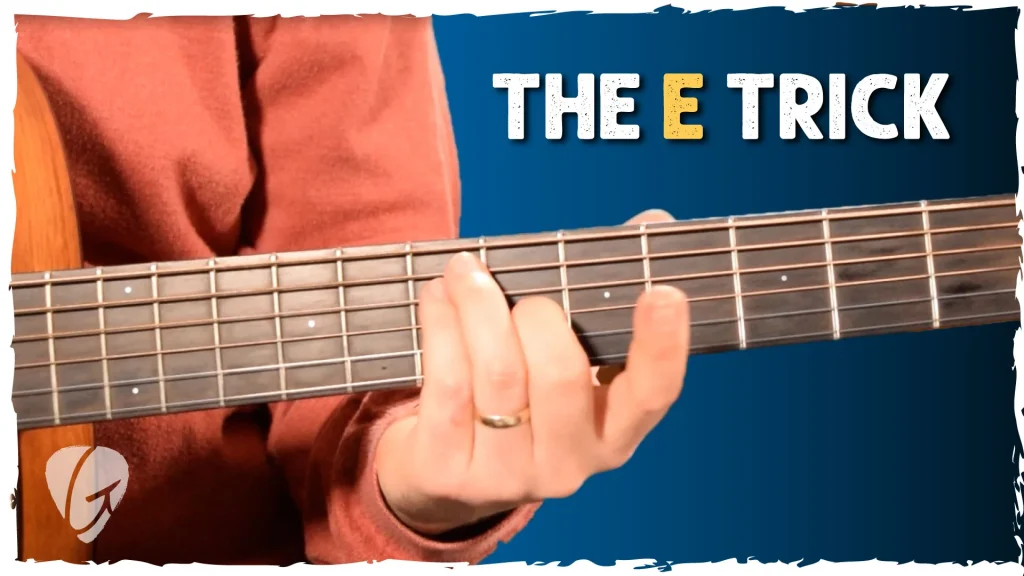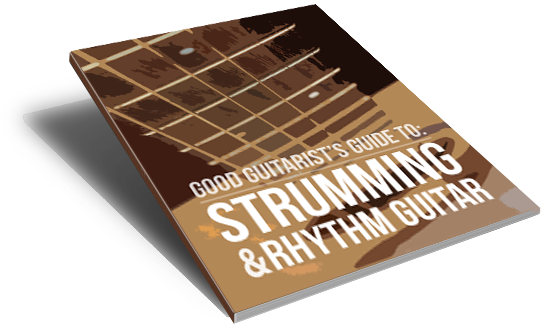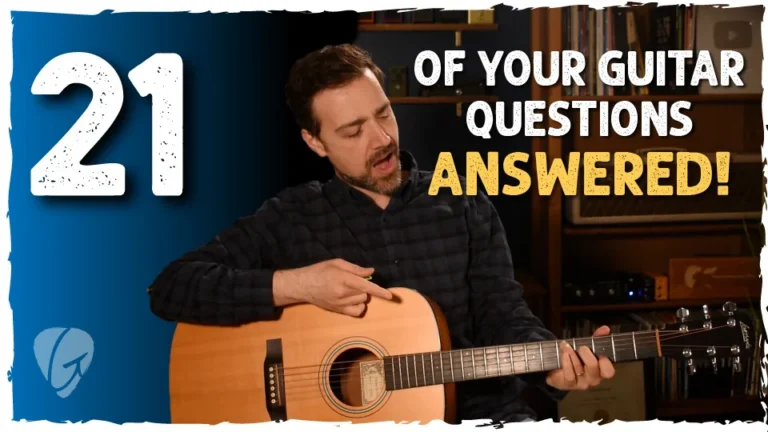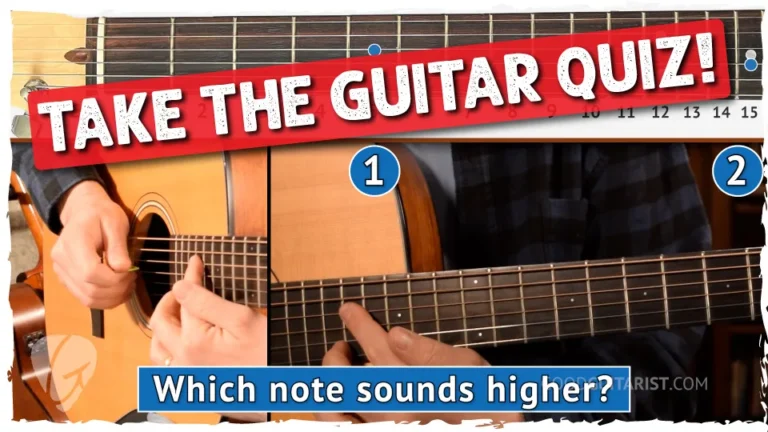The E Chord Trick That Defined 90s Acoustic Rock (And How You Can Use It Too)
Unlock that iconic 90s acoustic sound with this easy E chord trick. Learn how to move it up the fretboard, develop technique, and sound like Foo Fighters or Radiohead in minutes.
The “E Chord Trick”
Hey, it’s James here from GoodGuitarist.com, and today I want to show you something that totally changed the way I play acoustic guitar—and I bet it’ll do the same for you.
The other day, I was sitting at my desk transcribing some tunes, and I noticed something: so many songs from the 90s use this one specific chord trick that it pretty much defines the era’s sound. You don’t really hear it in earlier or later decades—not as prominently anyway.
Here’s the Trick
It all starts with your regular E major chord shape.
Now here’s where the magic happens—we slide it up and down the fretboard. That’s it. It’s simple, but it sounds massive.
Then we take it a step further…
You can…
- Strum it back and forth for that moody, nostalgic vibe
- Pick out individual notes (especially on the top strings) to create little melodies
- Start building real technique without the strain of full bar chords
This shape gives you that big, rich sound while helping you refine your thumb and arm positioning—super helpful if you’re struggling with bar chords.
Some Spots to Try
Start on the second fret for the regular E chord shape. Then move it up the fretboard while keeping your fingers in the same shape. A few combos I like to use:
- 2 – 7 – 5 (classic 90s vibe)
- 7 – 3 – 5 – 8 (reminds me of Foo Fighters)
- 3 – 7 – 8 – 1 (feels very Radiohead or Weezer if you pick it slowly)
The cool part is, these sound good with just strumming or picking. If you’re feeling creative, try playing softly and letting certain notes stand out—it really adds a layered, emotional feel.
The “90s Shape”
Try playing the E chord without your index finger. This opens up a whole new sound. I call it the “90s shape” because it’s all over those alt-rock acoustic tracks from the era.
Once you’re comfortable, try this version:
- Ring and pinky on the 7th fret
- Middle finger on the 6th fret
- Index finger reaching back to the 5th fret on the low E string
It’s kind of like a barre chord, but way easier—and way more forgiving. This is an awesome stepping stone for building real strength and learning proper hand positioning without overdoing it.
Final Thoughts
This simple trick can completely refresh your practice routine. It’s a fun, musical way to break out of standard chord transitions, explore dynamics, and start sounding more like the artists you love.
I’ve put together a worksheet with the TABs and everything you need – available on my patreon page.
If you’re ready to go even further, check out my Premium Membership. It’s your all-access pass to everything I offer – step-by-step courses, exclusive bonuses, and a private community to help you keep growing.
Have a fun time practicing and I’ll see you soon!
-James
All-Access Pass
Start your 10-day FREE trial
- Step-By-Step Courses
- Exclusive YouTube Bonuses
- Q&A with James






